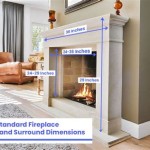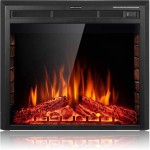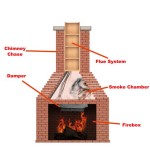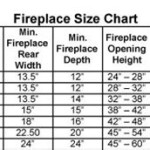Cleaning A Gas Fireplace: A Comprehensive Guide
A gas fireplace offers a convenient and aesthetically pleasing alternative to traditional wood-burning fireplaces. However, like any appliance, regular maintenance, including cleaning, is essential for optimal performance, safety, and longevity. Accumulated dust, soot, and debris can impair the unit's efficiency, potentially leading to malfunctions and even hazardous conditions. This article provides a detailed guide on how to clean a gas fireplace effectively.
Before commencing any cleaning procedure, safety precautions are paramount. Always ensure the gas supply to the fireplace is completely shut off. Locate the gas shut-off valve, typically situated near the fireplace or in the adjoining room, and turn it to the "off" position. Allow the fireplace to cool down completely. Never attempt to clean a hot fireplace as this poses a significant safety risk. Disconnect the appliance from the electrical power supply, if applicable, as some models have electrically operated components. Consult the manufacturer's instructions for specific safety guidelines pertaining to your unit. Gather the necessary cleaning supplies, including a vacuum cleaner with a hose attachment, soft brushes (nylon or natural bristle), a mild detergent, a spray bottle filled with water, and appropriate safety glasses and gloves.
Removing and Cleaning the Glass Door
The glass door is a prominent component of most gas fireplaces and often accumulates dust, soot, and fingerprints, hindering the viewing experience. The removal process varies depending on the fireplace model, but generally involves releasing latches or screws that secure the door in place. Consult the owner's manual for specific instructions on how to remove the glass door safely and correctly. Once removed, lay the glass door on a protected surface, such as a drop cloth or cardboard, to prevent scratches. Avoid placing it on hard surfaces like concrete. Prepare a cleaning solution by mixing a small amount of mild detergent with warm water in a spray bottle. Generously spray the glass door with the cleaning solution, ensuring complete coverage. Avoid using abrasive cleaners or scouring pads as they can scratch the glass surface. Allow the solution to dwell for a few minutes to loosen stubborn grime.
Using a soft cloth or sponge, gently wipe the glass door to remove the cleaning solution and accumulated dirt. For stubborn stains, use a soft brush to agitate the area gently. Rinse the glass thoroughly with clean water to remove any remaining traces of detergent. Use a clean, dry microfiber cloth to dry the glass door completely. Microfiber cloths are effective at absorbing moisture and preventing streaks. Inspect the glass for any remaining smudges or streaks. If necessary, repeat the cleaning process until the glass is perfectly clean and clear. Before reinstalling the glass door, inspect the gasket that surrounds the door frame. If the gasket is damaged or worn, it should be replaced to ensure a proper seal. Reinstall the glass door according to the manufacturer's instructions, ensuring it is securely fastened.
Cleaning the Firebox and Logs
The firebox, the interior of the fireplace, and the artificial logs are prone to accumulating soot and dust. Before cleaning, use a vacuum cleaner with a hose attachment to remove any loose debris from the firebox. Pay particular attention to corners and crevices where dust tends to accumulate. Avoid dislodging any of the pilot assembly components. The artificial logs, typically made of ceramic or concrete, can be carefully removed for cleaning. Consult the owner's manual for the proper log placement diagram; documenting the arrangement before removal can be helpful for reassembly. Use a soft brush or a vacuum cleaner with a soft brush attachment to remove dust and soot from the logs. For stubborn stains, use a slightly damp cloth with a mild detergent solution. Avoid immersing the logs in water as this can damage them.
Carefully clean the burner assembly, which is the metal component that distributes the gas to create the flames. Use a soft brush to remove any debris from the burner ports. Clogged burner ports can result in uneven flame patterns or reduced heating efficiency. Consult the manufacturer's instructions for specific cleaning recommendations for your burner assembly. After cleaning the firebox and logs, ensure that all components are completely dry before reassembling. Refer to the log placement diagram or the owner's manual to correctly position the logs within the firebox. Incorrect log placement can affect the flame pattern and heating performance of the fireplace.
Inspecting and Cleaning other Components
In addition to the glass door, firebox, and logs, several other components of a gas fireplace require periodic inspection and cleaning. Inspect the vent or chimney for any blockages or obstructions. Blockages can prevent proper ventilation and lead to a buildup of carbon monoxide, a dangerous and odorless gas. If you suspect a blockage, contact a qualified professional to inspect and clean the vent or chimney. Check the pilot light assembly for any signs of dirt or debris. The pilot light is a small flame that ignites the main burner. A dirty pilot light can cause lighting problems or malfunction. Use a small brush to gently clean the pilot light assembly. Refer to the manufacturer’s documentation for specific instructions regarding the pilot light cleaning procedure.
Examine the control panel or control valve for any signs of damage or malfunction. The control panel is used to adjust the flame height and other settings. Clean the control panel with a damp cloth to remove any dust or fingerprints. If the control panel is not functioning properly, contact a qualified technician for repair. Inspect the gas line connections for leaks. Use a soapy water solution to check for leaks. Apply the solution to the connections and look for bubbles. If you detect a gas leak, immediately shut off the gas supply and contact a qualified professional for repair. Ensure all components are reassembled correctly and securely after cleaning and inspection. Double-check all connections and fasteners to prevent any potential problems.
Regular cleaning and maintenance of a gas fireplace are essential for maintaining its performance, safety and longevity. By following these steps, homeowners can ensure their gas fireplace provides years of reliable heating and enjoyment.

How To Clean A Gas Fireplace

How To Clean A Gas Fireplace 11 Steps With S Wikihow

How To Care For Your Fireplace Gas Fireplaces Chimney Cleaning

Gas Fireplace Cleaning Diy Or Hire A Professional

Gas Fireplace Cleaning Colony Heating And Air Conditioning

Fireplace Maintenance For Wood And Gas Fireplaces Sierra Hearth Home

Cleaning The Inside Of Gas Fireplace Glass Thrifty Decor Diy And Organizing

Why Is It Important To Get My Gas Fireplace Logs Clean Regularly

How To Clean A Gas Log Fireplace Ina Comfort Air

How To Clean A Gas Fireplace 11 Steps With S Wikihow








